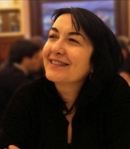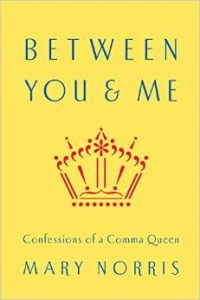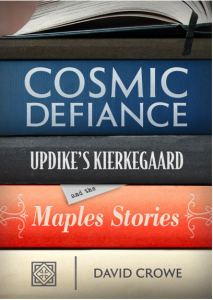Because The John Updike Society went very quickly from an author society of 35 members to a 501 c 3 non-profit organization of 250+ members with a six-figure budget and the responsibility of restoring and maintaining The John Updike Childhood Home, the board decided at their October 4, 2014 board meeting to alter the composition and election structure of the board to reflect current sound practices among non-profits of similar size and mission. It was decided that two new board members would be added, with a nominating committee composed of board members bringing forth names of candidates who fit the current needs of the board. Board members then voted and extended an invitation to the two who received the most votes: Biljana Dojčinović, Associate Professor, Dept. of Comparative Literature and Theory of Literature, Faculty of Philology, University of Belgrade, Serbia, and Robert Luscher, Professor of English, University of Nebraska at Kearney. Both accepted and begin serving three-year terms immediately, joining current board members Jim Plath (president), Jim Schiff (vice-president and editor of The John Updike Review), Peter Bailey (secretary), Marshall Boswell (Treasurer), and directors Sylvie Mathé and Don Greiner.
At the October meeting, the board also determined that two positions should be converted into general membership seats, to be decided by an election in which all members vote. The first three-year position to be filled is the seat vacated by Jack De Bellis, who resigned last year in order to make way for “new blood.” The board is grateful for De Bellis’s tireless service and will miss his presence. But he will continue to advise on an informal basis. Members soon will receive calls for nomination from the secretary regarding the election.
 Biljana Dojčinović is the director of the national project Кnjiženstvo—theory and history of women’s writing in Serbian until 1915 and editor-in-chief of Knjiženstvo, A Journal in Literature, Gender and Culture. She has been a member of The John Updike Society since its founding and a member of the editorial board of The John Updike Review since 2010. Her Ph.D. was focused on the narrative strategies in John Updike’s novels, and in 2007 she published a monograph in Serbian on Cartographer of the Modern World: The Novels of John Updike. She is also the author of numerous essays on Updike’s works and other topics, as well as five more academic books.
Biljana Dojčinović is the director of the national project Кnjiženstvo—theory and history of women’s writing in Serbian until 1915 and editor-in-chief of Knjiženstvo, A Journal in Literature, Gender and Culture. She has been a member of The John Updike Society since its founding and a member of the editorial board of The John Updike Review since 2010. Her Ph.D. was focused on the narrative strategies in John Updike’s novels, and in 2007 she published a monograph in Serbian on Cartographer of the Modern World: The Novels of John Updike. She is also the author of numerous essays on Updike’s works and other topics, as well as five more academic books.
 Rob Luscher is the author of John Updike: A Study of the Short Fiction and “Updike’s Olinger Stories: New Light among the Shadows. He has also published essays on Updike and his short fiction in the Dictionary of Literary Biography, the Blackwell Companion to the American Short Story, Eureka Studies in Short Fiction, and The John Updike Review. Beyond Updike, his scholarship focuses on the short story sequence, with published essays on volumes of short fiction by Ernest Gaines, Mary Wilkins Freeman, Clark Blaise, and Robert Olen Butler. He has been a member of The John Updike Society since its founding, and in addition to teaching at the University of Nebraska at Kearney he also serves as Faculty Coordinator of the Thompson Scholars Learning Community.
Rob Luscher is the author of John Updike: A Study of the Short Fiction and “Updike’s Olinger Stories: New Light among the Shadows. He has also published essays on Updike and his short fiction in the Dictionary of Literary Biography, the Blackwell Companion to the American Short Story, Eureka Studies in Short Fiction, and The John Updike Review. Beyond Updike, his scholarship focuses on the short story sequence, with published essays on volumes of short fiction by Ernest Gaines, Mary Wilkins Freeman, Clark Blaise, and Robert Olen Butler. He has been a member of The John Updike Society since its founding, and in addition to teaching at the University of Nebraska at Kearney he also serves as Faculty Coordinator of the Thompson Scholars Learning Community.








